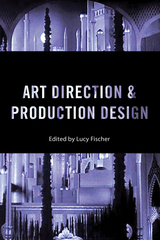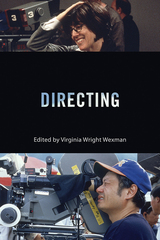2 books by Connor, J.D.

Art Direction and Production Design
Fischer, Lucy
Rutgers University Press, 2015
How is the look of a film achieved? In Art Direction and Production Design, six outstanding scholars survey the careers of notable art directors, the influence of specific design styles, the key roles played by particular studios and films in shaping the field, the effect of technological changes on production design, and the shifts in industrial modes of organization.
The craft’s purpose is to produce an overall pictorial “vision” for films, and in 1924 a group of designers formed the Cinemagundi Club—their skills encompassed set design, painting, decoration, construction, and budgeting. A few years later, in recognition of their contributions to filmmaking, the first Academy Awards for art direction were given, a clear indication of just how essential the oversight of production design had become to the so-called majors. The original essays presented in Art Direction and Production Design trace the trajectory from Thomas Edison’s primitive studio, the Black Maria, to the growth of the Hollywood “studio system,” to the influence of sound, to a discussion of the “auteur theory,” and to contemporary Hollywood in which computer-generated imagery has become common. By 2000, the Society of Motion Picture Art Directors became the Art Directors Guild, emphasizing the significance of the contributions of art direction and production design to filmmaking.
Art Direction and Production Design is a volume in the Behind the Silver Screen series—other titles in the series include Acting, Animation, Cinematography, Directing, Editing and Special/Visual Effects, Producers, Screenwriting, and Sound.
[more]

Directing
Virginia Wright Wexman
Rutgers University Press, 2017
When a film is acclaimed, the director usually gets the lion’s share of the credit. Yet the movie director’s job—especially the collaborations and compromises it involves—remains little understood.
The latest volume in the Behind the Silver Screen series, this collection provides the first comprehensive overview of how directing, as both an art and profession, has evolved in tandem with changing film industry practices. Each chapter is written by an expert on a different period of Hollywood, from the silent film era to today’s digital filmmaking, providing in-depth examinations of key trends like the emergence of independent production after World War II and the rise of auteurism in the 1970s. Challenging the myth of the lone director, these studies demonstrate how directors work with a multitude of other talented creative professionals, including actors, writers, producers, editors, and cinematographers.
Directing examines a diverse range of classic and contemporary directors, including Orson Welles, Tim Burton, Cecil B. DeMille, Steven Soderbergh, Spike Lee, and Ida Lupino, offering a rich composite picture of how they have negotiated industry constraints, utilized new technologies, and harnessed the creative contributions of their many collaborators throughout a century of Hollywood filmmaking.
The latest volume in the Behind the Silver Screen series, this collection provides the first comprehensive overview of how directing, as both an art and profession, has evolved in tandem with changing film industry practices. Each chapter is written by an expert on a different period of Hollywood, from the silent film era to today’s digital filmmaking, providing in-depth examinations of key trends like the emergence of independent production after World War II and the rise of auteurism in the 1970s. Challenging the myth of the lone director, these studies demonstrate how directors work with a multitude of other talented creative professionals, including actors, writers, producers, editors, and cinematographers.
Directing examines a diverse range of classic and contemporary directors, including Orson Welles, Tim Burton, Cecil B. DeMille, Steven Soderbergh, Spike Lee, and Ida Lupino, offering a rich composite picture of how they have negotiated industry constraints, utilized new technologies, and harnessed the creative contributions of their many collaborators throughout a century of Hollywood filmmaking.
[more]
READERS
Browse our collection.
PUBLISHERS
See BiblioVault's publisher services.
STUDENT SERVICES
Files for college accessibility offices.
UChicago Accessibility Resources
home | accessibility | search | about | contact us
BiblioVault ® 2001 - 2024
The University of Chicago Press









